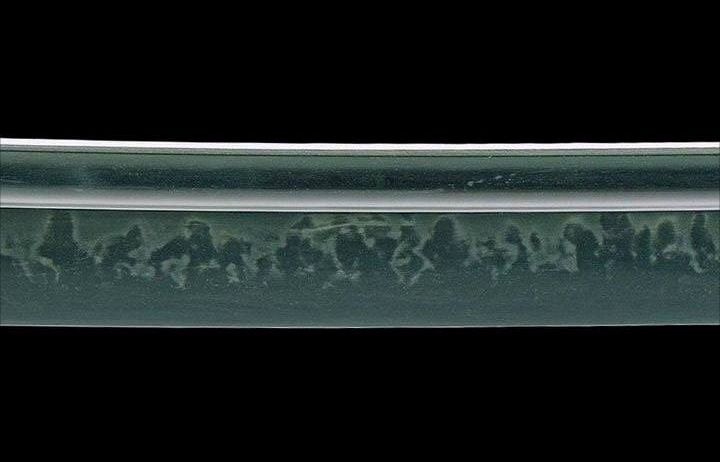Is that a passion.
About my work
I was born in 1973. My interest in Japanese swords began when I was like 14, firstly as a user when I started to practice Iaido. I was more and more fascinated with the production of the swords itself. In the beginning, I only collected basic information about the technology of the production but later I tried to make some swords. Making Japanese swords became my profession in 2000. In the beginning, I made swords only for Iaido and tameshigiri practice from homogenous modern steel. However, a deeper study of the subject and technology of the traditional making process of Japanese swords led me to melt and process my own steel.
I got more and more interested in swords made 11th to 14th century. The way the steel of these swords is processed and metallurgical activities on Japanese swords from these times eventually led to my focus on the production of swords of Ichimonji School. The main focus of my study and transition of the results into practice became discovering original methods of making steel, its processing and technics of hardening. My goal is to find processes allowing origination of metallurgical effects typical for works of the Heian period through to the early Muromachi period - finding procedures which would allow me to reproduce effects, such as utsuri, koshiba, nie and techniques enabling hamon line in the style of Ichimonji School. During the past few years, I started to experiment with techniques of other schools in old Koto style, mainly Soshu, Yamato and Gassan. I repeatedly visited Japan to study traditional schools and Koto swords. My friends in Japan allowed me to study excellent works of old masters. In 2013 I was invited to Ichinoseki district in Iwate province to make sword in Mokusa style and tanto in Ichimonji style. These works present in Japan my effort to understand Japanese swords and the journey of the swordsmith to making a perfect blade.
From the wide selection of traditional swordsmiths´ schools got the most of my attention works of the ICHIMONJI School. Its tradition reaches all the way back to the roots of Japanese swordsmithing. I consider its natural hardening line the most interesting feature of this school. CHOJI hamon of ICHIMONJI School is one of the most impressive hardening patterns and furthermore it is accompanied by other metallurgical effects, especially UTSURI. Therefore, ICHIMONJI School and reproduction of blades in its style is the main focus of my work. I was also successful in reproducing blades in of other schools, such as YAMATO, SOSHU, GASSAN and MOKUSA.
These schools have different constructions of the steel composition, different structure of the folding pattern HADA and also different hardening line HAMON. Also, the other hardening effects, such as KINSUJI, SUNAGASHI, UTSURI or NIE differ. Therefore, when making a blade of a certain school I try to maintain the characteristic features of that school. It is, therefore, possible to ask for a different folding structure from ITAME to MOKUME, MASAME or AYASUGI and their combination.
As to the hardening I prefer CHOJI of ICHIMONJI School, but based on the requirements and school I can also produce different types of hamon like SUGUHA, MIDARE, CHÓJI-MIDARE, GUNOME and other.

The signature
The signature I use is a character of a wolf - Okami. It has originated from semantic transcription of my surname Bolf that comes from the German Wolf. The signature is read Borufu (Bolf).
